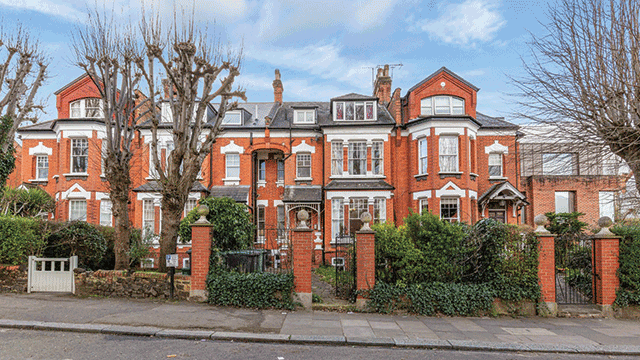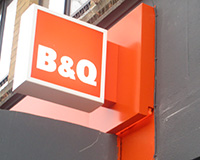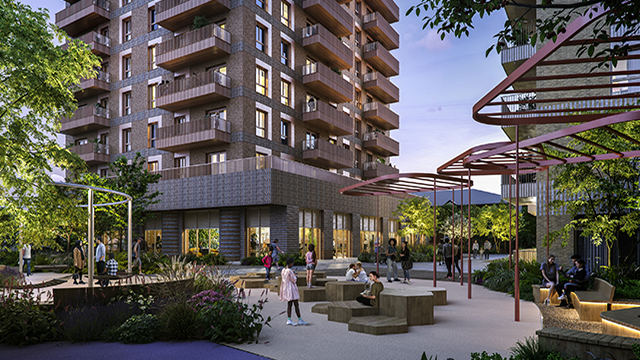B&Q joins the big-box high street stampede
News
by
Amber Rolt and James Child
B&Q is the latest big-box retailer to commit to smaller space on the high street, as shops strive to adapt to changing shopper habits.
The DIY giant will open its first high street shop on Holloway Road, N7, on 10 March.
B&Q said: “The trial store will be just over 3,000 sq ft in size, and will provide customers with an offer focused on home décor, repair and maintenance, with a suite of supporting services.
[caption id="attachment_875351" align="alignright" width="300"] B&Q’s new Holloway store[/caption]
B&Q is the latest big-box retailer to commit to smaller space on the high street, as shops strive to adapt to changing shopper habits.
The DIY giant will open its first high street shop on Holloway Road, N7, on 10 March.
B&Q said: “The trial store will be just over 3,000 sq ft in size, and will provide customers with an offer focused on home décor, repair and maintenance, with a suite of supporting services.
“B&Q will also enable customers access to its full range of over 35,000 products via home delivery and click and collect.”
The move to the high street mirrors that of other big-box retailers.
DFS, Topps Tiles, Carpetright, Pets at Home and Ikea have all invested in high street space in recent years.
Topps Tiles’ now has 15 high street branches in its portfolio of 343 shops and Ikea is planning to open more small format shops following the success of its debut at Westfield Stratford, E20.
The retailers have descended on the high street in a bid to attract a new audience, increase footfall, and maximise their click-and-collect capabilities. The shops are more convenient for city centre shoppers who may not have a car to visit a retail park and also attract a younger audience.
So does this signal the end of the line for traditional retail parks?
When big-box DIY shops such as Homebase and B&Q first opened, they took business away from the high street by offering a wide selection of bulky goods. Now, with the rise of e-commerce, the opposite is happening, as consumers find travelling to retail parks inconvenient when they can get their bulky goods online and have them delivered to their door.
Anish Dosani, senior retail analyst at GlobalData, said: “The requirement for a big box will always be there, particularly within the DIY sector due to the size of some products, but with more retailers investing online we may see less of them.”
In 2015 B&Q owner Kingfisher announced plans to reduce its estate by shutting 60 shops in locations where sales were lagging. The nature of the DIY market is also changing, with more customers opting to get someone else to do the work for them rather than doing it themselves.
B&Q has said that this shop is only a trial, and it has yet to commit to further high street sites.
In London locations where land values and competition continues to soar, many retail park landlords are selling to residential developers.
Two B&Q sites in Wandsworth, SW18, are being closed to be redeveloped as residential schemes.
Paul Wilkinson, founding partner at Wilkinson Williams, which advises Carpetright on its high street acquisitions, said: “They are taking smaller shops because if they want the coverage then that is what they have to do. Come lease expiry residential uses are higher value.”
All eyes will now likely turn to B&Q’s main competitor Homebase, which was bought by Australian firm Wesfarmers for £340m in January 2016 and due to be renamed Bunnings.
Wesfarmers has experience on the high street, opening a high street branch of Bunnings in Melbourne as well as operating in smaller, more accessible locations of 20,000 sq ft in comparison to its 200,000 sq ft warehouses.
Speaking to Australian newswire news.com.au, Bunnings chief executive John Gilliam said the retailer was “well versed in getting the best out of smaller shops”.
Dosani added: “I think it is going to be interesting to see how B&Q’s competitors respond to this. If they are successful then the competitors may follow suit.
“London is a good testing ground for this concept but it could work anywhere in the UK.”
B&Q Portfolio in numbers
B&Q has been one of the most active retailers when it comes to optimising its store portfolio.
To mark the opening of the chain’s first small high street store, EG looks at the eight things you need to know about B&Q’s existing portfolio.
1. 52 STORES LOST
Two years ago Kingfisher Group announced that around 60 stores would be closing across the country, although no formal list was announced or distributed. EG Research has identified that 52 stores nationwide have either closed or been put at risk of closure since March 2015.
2. 2-3M SQ FT SPACE UNLEASHED
If you combine the total sq ft of space set to be relinquished by B&Q at these stores, it come in at just under 3m sq ft.
3. BARGAIN IS KING
Two bargain retailers have taken advantage of B&Q’s store closure plan. Of the 52 closed stores, 12 have been taken by B&M Bargains, which reflects 20% of the overall space relinquished. The Range has taken five stores, some 10% of the disposed space.
4. SUPERMARKETS QUICK TO RESPOND
Lidl and Aldi have also taken interest in the space helping themselves to six of stores, adding to their market share in a competitive market.
5. TRAMPOLINE BOUNCE FALLS FLAT
The rise of trampoline parks in the out-of-town retail domain has been well-documented over recent months, and with the average unit size required for them being around 20,000-50,000 sq ft, you would have expected to see several B&Q stores converted. However, just two applications have been submitted.
6. 1,000 NEW HOMES
In an odd quirk of fate (given the nature of B&Q’s business), only three units have planning applications lodged for the change of use to residential. Approximately 1,065 homes will be built across that new glut of space set to be released.
7. EVEN MORE NEW SCHEMES
One of the biggest trends we have seen at EG this year is the proliferation of applications and permissions for new out of town retail parks. The B&Q portfolio has not been immune.
There have been 14 applications lodged for complete sub-divisions and new schemes themselves, ranging from three to seven new units and encompassing a third of the overall footprint that B&Q is leaving behind.
The infrastructure is already in place for this in most if not all cases – multiple leases will enhance the rental gravitas for the owners of buildings and could encourage higher footfall.
8. NUMBER OF ACTUAL RETAIL UNITS JUMPS 63%
Of those 52 store identified for closure from looking at EG planning we find that in terms of unit conversion we will see that number of 52 jump up to 85. Good news for other retailers trying to break ground in a highly constrain











